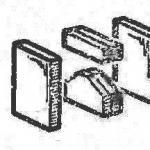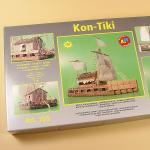A dog with severe thinness and lack of appetite is clearly an unhealthy animal. The first, associative diagnosis for the “sick” is dystrophy. However, dystrophy in dogs is not only a lack of weight and an apathetic state, first of all, it is a violation of metabolic processes, and secondly, a serious threat to life.
The disease is classified depending on the nature of the disruption of processes into protein carbohydrate, mineral and fatty, the latter being the most common. Violation of metabolism and breakdown of substances leads to the accumulation of fat (droplets) in the tissues of the liver (lipidosis of the liver), less often, in the kidneys or myocardium of the heart.
The term "dystrophy" means a violation of metabolic processes in the body, which led to starvation, modification, degradation or death of cells and tissues. As you know, cells feed through membranes (walls), which are formed from lipids and proteins (proteins). In case of violation of the functioning of cell membranes, there is a deposition of fat droplets in the tissues of organs - the heart, kidneys, liver.
Note! Golden Retrievers are prone to muscular dystrophy. The disease can be called pedigree. It occurs due to a lack of dystrophin protein. Puppies and adult dogs get sick, effective methods of treatment do not exist, although research in this area is actively underway.
Causes of fatty degeneration in dogs
The disease is secondary, that is, the consequence of a violation that affects the body for a long time. Identification of the cause of the development of dystrophy is extremely important for subsequent treatment. As practice shows, the most common root cause is feeding poor-quality dry food.
Read also: Ear diseases in dogs: causes and main pathologies

Possible violations include:
- Violation of the heart muscle and respiratory system, hypoxia, anemia.
- Acute infectious diseases or chronic ailments that occur secretly.
- Unbalanced diet, lack / excess of proteins or fats, beriberi.
- Systematic treatment with antibiotics or other drugs that adversely affect the intestinal microflora.
- Eating foods that have expired.
- Poor chewing of food due to malocclusion, diseases of the oral cavity or teeth.
- Food or chemical poisoning that affects the functioning of the central nervous system.
- Hormonal imbalance, including diabetes.
- Diseases of the digestive system.
- Changes that led to degenerative processes in the body, including hunger.

Important! If you find a starving dog with obvious dystrophy and want to help her, in no case do not feed the animal with ordinary food. Live yogurt or kefir, egg yolk (in small amounts, but often) and medicines that restore the intestinal microflora are all that is needed so as not to kill the dog before visiting the veterinarian.
Signs of fatty degeneration in dogs
Most often, the disease proceeds in a sluggish form and becomes acute after stress or injury. In a visually healthy animal, there is rapid weight loss and a complete refusal of food, for no apparent reason. The acute stage proceeds quickly, however, the owners often confuse fatty degeneration with poisoning and lose precious time. In fact, the acute form of dystrophy is manifested by toxication with the following symptoms.
This article is about pathologies. dog corneas, in particular about pigmentary keratitis and corneal dystrophy. In veterinary medicine, the topic of eye diseases in dogs occupies a separate niche. Very often, these diseases are difficult to cure due to delayed diagnosis. After all, the owner of the animal cannot always recognize the signs of an incipient eye disease in a dog. For this reason, regular visits to the veterinarian are recommended.
pathology of the cornea
The general health of the cornea of the dog's eye is determined, first of all, by the degree of its transparency. So as soon as you notice corneal clouding in dogs, this may already indicate the presence of some pathology. The following signs also speak about the pathology of the cornea of \u200b\u200bthe eye:
- hemorrhage in the eye;
- swelling;
- pupil color change;
- calcium deposits (calcification);
- inflammatory cellular infiltrates;
- destruction of enzymes by endogenous proteases of the body and, as a result, degradation and scarring of the cornea.
Such changes are a deviation from the norm and can be caused by various reasons. Pathogenetic reactions are often complex. Any pathology of the cornea of the eye is a consequence, and the causal factor always lies elsewhere. It is this root cause that should be sought, having discovered it, make every effort for the correct and thoughtful treatment and restoration of the functions of the eye.
Superficial chronic keratitis in a dog
Superficial chronic keratitis(pannus) is an immune-mediated keratitis, the cause of which should be sought in genetics, sometimes in the ecological setting of a particular region. The most favorable areas for the development of such a disease are places with an increased radiation background. If we talk about the influence of dog breed on the likelihood of chronic keratitis in a dog, the most susceptible are German Shepherds and their crossbreeds. Greyhounds are also at risk. But most often, dogs of all breeds suffer from chronic keratitis, and the statistical value among shepherd dogs and greyhounds is visible only when a large number of diseased individuals are studied. The disease begins with a slight symmetrical reddening of the cornea. Although it may begin in other quadrants of the cornea and be asymmetric.
Histologically, corneal infiltrate is defined by plasma cells, lymphocytes, and blood vessels. As the process progresses, the entire cornea can be affected, leading to a marked decrease in vision, and eventually to blindness. Cloudy cornea in a dog and proliferation of fibrous tissue (fibrosis) are characteristic signs of the chronic course of the process. The disease occurs at the age of 3-5 years. Pannus is very difficult to treat in young animals. The diagnosis is made on the basis of the clinical picture, the breed of the dog and the cytology of the cornea or conjunctiva. Cytology usually shows elevated levels of leukocytes and plasma cells.
Like most immune-mediated diseases, chronic keratitis in dogs better to prevent than to cure. The complex of preventive measures includes the use of drugs of a number of corticosteroids, cyclosporines, Pimecrolimus (Elidel) and Tacrolimus (Protopic). The most preferred among steroids are drugs containing prednisolone not more than 1% and dexamethasone (0.1%). The required frequency of medication is determined by the complexity of the keratitis in the dog, the time of year and, on average, is about 2-4 times a day. Subconjunctival steroids may be administered as an adjunct to primary therapy or in particularly difficult cases. Such drugs may be Triamcinalone, Methylprednisolone or Betamethasone. They are all quite effective, however, for better removal of conjunctival formations, Betamethasone injections should be used. At dog keratitis treatment local application of Cyclosporine at a concentration of 0.2%, 1%, 2% or Tacrolimus at a concentration of 0.02% or 0.03% is acceptable. Sometimes superficial chronic keratitis in a dog treatable only when used separately Cyclosporine or Tacrolimus. In some cases, the use of these drugs allows you to reduce the use of steroids, which reduces side effects. Intensity dog keratitis treatment may be reduced during the winter months and increased during the summer. Beta irradiation and lamellar keratectomy can act as additional treatment options, but today these technologies are practically not used. Plasma cells and lymphocytes are particularly sensitive to beta radiation and this makes ionizing radiation the most effective treatment for severe cases. However, very strict licensing requirements for devices using strontium-90 have led to the fact that almost no one uses this method of treatment.
Inflammation of the eyes in a dog (scleritis, episcleritis)
These are autoimmune and immune-mediated conditions that occur as a consequence of chronic infectious diseases, metabolic disorders, or are characterized by gradually spreading lesions of the sclera or episclera of the eye. Lesions can be unilateral or bilateral. Often only one quadrant is affected, and the neoplasm that appears is mistaken for scleritis. One way or another, a scleral neoplasm is different from melanoma. There is a genetic predisposition to this disease in Cocker Spaniels and Airedale Terriers. In Airedale Terriers, the condition can often be complicated by the simultaneous development of uvit (sclerovitis). A typical histological sign of scleritis and episcleritis in dogs may be the appearance of lymphocytes, plasma cells, and histiocytes in the thickness of the sclera. The areas adjacent to the cornea of the eye, as a rule, suffer from numerous micro-inflammations of blood vessels and tissues, and also, lipid degeneration is sometimes observed. Deep necrotic dog eye inflammation quite rare, but can cause serious intraocular diseases (for example, retinal detachment). The diagnosis is made on the basis of the clinical picture. It is possible to do a biopsy, however, often this is not a necessary procedure. Immune system tests, as a rule, are not useful and uninformative. Treating Inflammatory Eyes in Dogs consists of a combination of the use of general and subconjunctival steroid drugs and non-steroidal anti-inflammatory drugs. The latter include prednisolone, azathioprine, and the combination of tetracycline and niacinamide. In some cases, the use of cyclosporine (both orally and topically) can be very effective. A long period of treatment is expected.
Pigmentary keratitis in dogs
Pigmentation of the corneal epithelium or its stroma is called pigmentary keratitis(it is also sometimes called corneal melanosis or corneal pigmentation). Promote development pigmentary keratitis in a dog may be several factors, including a violation of development in the structure of the eye in the process of extraembryonic (placental) formation, excessive folds of the muzzle, dry eyes. Dry eyes are usually the most common cause of keratitis in most dog breeds (except pugs). Sprouting pigment (pigmentation) may appear after the healing of a corneal ulcer (often post-traumatic) or in parallel with another disease, such as pannus. A similar situation often occurs just in pugs. In this breed, genetically predisposed exophthalmos and corneal exposure may be precipitating factors. In any case, the breed of the dog remains the most important factor for the development of such a pathology, since, despite the similar head structure, in dogs of such breeds as bulldog, Pekingese and Shih Tzu, pigmentary keratitis is much less common. Canthoplasty and canthopexy (lower eyelid lift) are often used to slow down the course of the disease. The advantage of this procedure is to increase eye protection by reducing the palpebral fissure, eliminating trichiasis (abnormal growth) of nasal hairs and correcting the canthal ligaments of the inner and outer canthus, as well as nasal skin folds.
 Pugs use a holistic treatment approach pigmentary keratitis, combining surgical intervention and local treatment at the same time. Local treatment allows you to slow down painful inflammatory processes and consists of the use of cyclosporine, tacrolimus and corticosteroids. Cyclosporine and tacrolimus are approximately the same in their effectiveness and the final choice depends only on which drug is best suited to a particular patient. The use of steroids may only be of benefit in brachycephalic dog breeds, due to their propensity for corneal ulcers. It is also sometimes acceptable to use beta-irradiation, but it is justified only in cases where vision has been significantly affected and melanotic growths are significant, in other cases, the use of this type of treatment is inappropriate.
Pugs use a holistic treatment approach pigmentary keratitis, combining surgical intervention and local treatment at the same time. Local treatment allows you to slow down painful inflammatory processes and consists of the use of cyclosporine, tacrolimus and corticosteroids. Cyclosporine and tacrolimus are approximately the same in their effectiveness and the final choice depends only on which drug is best suited to a particular patient. The use of steroids may only be of benefit in brachycephalic dog breeds, due to their propensity for corneal ulcers. It is also sometimes acceptable to use beta-irradiation, but it is justified only in cases where vision has been significantly affected and melanotic growths are significant, in other cases, the use of this type of treatment is inappropriate.
Endothelial corneal dystrophy in a dog
This pathology is primarily caused by a defect in the endothelium of the cornea, which leads to its edema and, in the future, gives the cornea a bluish-gray tint. The primary causes in the differential diagnosis of edema can be considered corneal ulcers, uvititis, glaucoma, which are easy to distinguish and recognize by their condition. endothelial corneal dystrophy in dogs progresses slowly and usually begins in the lateral part of the cornea, but then spreads to its entire area. Breeds such as the Boston Terrier and Chihuahua are most likely to be affected, but dogs of all breeds are often affected. At an early stage, the disease, as a rule, does not cause painful conditions in the patient. Developing and progressive endothelial corneal dystrophy causes ulcerative keratitis and pain over time.
Therapy consists mainly in the application of a 5% sodium chloride ointment or suspension (Muro-128) to minimize swelling. In any case, a quick enough cleansing of the cornea of the dog's eye cannot and should not be expected. Topical antibiotics or atropine are used only when corneal ulcers in dogs. Conjunctival hyperemia occurs in an already ill dog. If the eyes are especially irritated and there are no ulcers, then topical steroids can be used with caution. Topical non-steroidal anti-inflammatory drugs (Flurbiprofan) have also been used successfully in some cases. Thermal cauterization (thermokeratoplasty) is used in especially severe cases and when opening ulcers on the cornea. This procedure, although not clear dog eye cornea completely, but will prevent swelling and ease the pain experienced during the opening of ulcers. The essence of this technique is the use of an ophthalmic laser to cauterize damaged areas of the cornea. It should be noted that the success of the operation depends on the skill of the surgeon, since inaccurate movement or too long burning can lead to complete destruction of the dog's cornea. Also, in some cases, it is advisable to use penetrating keratoplasty.
Lipid or calcium keratopathy in dogs
The deposits of lipids and salts on dog eye cornea are quite similar to the diseases described above, but have completely different causes, and their clinical differences are sometimes difficult to distinguish. However, there are three main signs by which pathological deposits on the cornea can be diagnosed:
- corneal dystrophy in dogs;
- degeneration of the cornea of the eye;
- lipoid arch of the cornea (a grayish line on the periphery of the cornea, a kind of annular opacification of the periphery, separated from its other parts).
Corneal dystrophy in dogs can be: hereditary, bilateral, symmetrical. There are also cases when dystrophy begins to progress in one eye, and then spreads to both. Corneal lipid degeneration can occur in different breeds of dogs, but Siberian Huskies, Samoyeds, Cocker Spaniels and Beagles are more often at risk. Clinically, lipid deposits may result in a slight, almost imperceptible crystalline mist in the central part of the cornea, or the affected part of the cornea may be completely opaque. The lipid deposit is usually subepithelial or stromal and consists of cholesterol, neutral fats, and phospholipids. There is no systemic nature in this disease and, as a rule, is not observed. The cornea is usually without ulcers, there is no inflammation. Very rarely, lipid deposits worsen dog vision However, they also do not deliver painful sensations. For these reasons, no specific treatment for this pathology is prescribed for dogs. If treatment begins, then lamellar keratectomy is used, however, it does not guarantee the recurrence of deposits, and the reason for this is persistent lipid metabolism disorders in the parenchyma leading to new and new sprouting.
 Corneal degeneration in the dog's eye can be caused by both lipid and salt deposits (and sometimes both). Initially, the degeneration may be preceded by corneal ulcers of the dog's eye, uvitis, and sometimes exophthalmos. Unlike corneal dystrophy, degeneration is more often unilateral than symmetrical (bilateral). The affected part of the cornea, most often, is opaque, rough, with destroyed epithelium. And this already creates a certain discomfort for the animal. Inflammation, vascularization, and pigmentation may also be seen. As a treatment for degeneration of the dog's eye, the same lamellar keratectomy- it allows you to reduce pain, restore vision, but with all this, this treatment does not guarantee the avoidance of relapse. In some cases, it is useful to use the ointment in conjunction with keratectomy. An alternative to the operation is the long-term use of abrasive and at the same time absorbable agents, such as powdered sugar, preparations based on natural honey and propolis, various combinations of pollen, wax and bee pollen. Be sure to use them simultaneously with ointments and drops without corticosteroids. However, their use (they are less traumatic) and effectiveness have not yet been sufficiently studied, and are only a weak alternative to modern methods and approaches to recovery. dog vision.
Corneal degeneration in the dog's eye can be caused by both lipid and salt deposits (and sometimes both). Initially, the degeneration may be preceded by corneal ulcers of the dog's eye, uvitis, and sometimes exophthalmos. Unlike corneal dystrophy, degeneration is more often unilateral than symmetrical (bilateral). The affected part of the cornea, most often, is opaque, rough, with destroyed epithelium. And this already creates a certain discomfort for the animal. Inflammation, vascularization, and pigmentation may also be seen. As a treatment for degeneration of the dog's eye, the same lamellar keratectomy- it allows you to reduce pain, restore vision, but with all this, this treatment does not guarantee the avoidance of relapse. In some cases, it is useful to use the ointment in conjunction with keratectomy. An alternative to the operation is the long-term use of abrasive and at the same time absorbable agents, such as powdered sugar, preparations based on natural honey and propolis, various combinations of pollen, wax and bee pollen. Be sure to use them simultaneously with ointments and drops without corticosteroids. However, their use (they are less traumatic) and effectiveness have not yet been sufficiently studied, and are only a weak alternative to modern methods and approaches to recovery. dog vision.
Lipid degeneration of the cornea may occur after a long period of corticosteroid treatment, such as cataract surgery, but such degeneration is not difficult to treat. Degeneration may regress after several treatment sessions.
The deposition of lipids that occurs in the periphery of the cornea, in combination with permanent hyperlipidemia, is called the lipoid arc of the cornea (annular opacification of the periphery of the cornea). Clinically, fat creates an opaque ring in the periphery of the cornea. The problem can occur in any breed of dog, but German Shepherds are especially prone to it. Annular opacification of the periphery of the cornea is a bilateral problem and is accompanied by mild inflammation and vascularization. Treatment is aimed solely at eliminating the underlying cause. In dogs suffering from lipid and salt deposits, first of all, a blood test should be taken to check the level of cholesterol, triglycerides, and also examine the thyroid gland. If the test results are satisfactory, then the dog's diet should be changed and this will partially solve the problem of lipid deposits.
punctate keratitis in dogs
Pinpoint keratitis quite rare in dogs. Note that dachshunds are most often ill with them. Pinpoint keratitis has an immune-mediated origin and is a particular form of corneal ulceration. On the cornea affected by punctate keratitis, punctate corneal clouding in dogs in the form of small fluorescent spots. Pinpoint keratitis affects one or both eyes. Topical application of cyclosporine in the form of drops or ointment can help, but the parallel application of steroids topically will be more effective.
Corneal dystrophy in shelties
A similar disease occurs in Shelties and sometimes in Collies, but the cause has not yet been fully elucidated. Many dogs have multifocal corneal opacities with persistence of the fluorescent patch. Secondary corneal degeneration may occur. The disease is very similar to punctate keratitis and treated in the same way. However, topical application of steroids must be carried out very carefully, as the reaction of the animal to the drug is sometimes difficult to predict. In the affected eye, with dystrophy of this kind, a small amount of tears is produced, which leads to an aggravation of the process ("vicious circle").
Corneal neoplasms in dogs
Canine corneal tumors occur quite rarely. The best known are dermoid and lumbar melanomas. Dermoids are benign congenital neoplasms that are most often observed on the temporary cornea. They are quite easy to remove with a lamellar keratectomy. Lumbar melanomas, according to histological features, are malignant tumors, however, they develop as benign ones. Their growth is very slow, however, if ignored for a long time, they will fill all the space available to them. According to their classification name, it is clear that they are formed in the corneoscleral junctions (limbs). Surgical treatment significantly slows down the progress of the disease. However, during the operation, it is possible to damage the eye too much, which indicates the doubtfulness of this method of treatment. Surgical intervention is understood as either complete excision followed by grafting, or partial removal followed by laser adjustment.
Spontaneous chronic defects of the corneal epithelium of the eyes in dogs
This is a particularly unpleasant disease (in terms of diagnosis and treatment) for veterinary medicine specialists, which is a specific ulcerative process. Usually, these processes are chronic, superficial, non-infectious (with the exception of feline herpes) and practically painless. In most cases, there is an excessive layering of the corneal epithelium and variable vascularization. Ulcers form anomalies of the corneal epithelium and basement membrane. All breeds of dogs are susceptible to the disease. Most often, dogs of middle and advanced age are affected. Appropriate topical treatment should include antibiotics and atropine 1% once or twice daily. To reduce the likelihood of recurrence, ointment or sodium chloride drops are applied topically. Also topical application of cyclosporine reduces the likelihood of scarring. Surgery and grid keratomy (mesh keratotomy) are often recommended for a complete cure. The purpose of the procedures is to restore the basement membrane and improve the connection between the epithelium and the stroma.
Mesh keratotomy
This procedure is only intended for the treatment of superficial non-infected ulcers and can never be used on deep corneal ulcers. Mesh keratotomy performed after pre-surgical debridement as described above. General anesthesia is recommended for restless dogs or when surgery is performed for the first time. In other cases, light sedatives are sufficient. Needles, diameter 22 or 25, are used for superficial incisions in the form of a grid. The mesh is created by "redrawing" the needle along the cornea, with its inclination 30-45°. Deep penetration into the cornea should be avoided. Otherwise, continue the prescribed treatment. After the procedure, anti-inflammatory analgesics (such as non-steroidal analgesics and tramadol) are used. Immediately after the operation, it is recommended to put on a protective Elizabethan collar on the dog. Most ulcers heal within two weeks after a reticular keratotomy procedure.
Eye diseases entail many negative consequences for the whole organism. A disease such as corneal dystrophy can lead to blindness, which will affect the quality of life of a pet. To avoid this, when the first symptoms appear, it is worth contacting an ophthalmologist veterinarian who can prescribe adequate treatment.
Symptoms of corneal dystrophy
Recognizing the disease is not so difficult. You just need to keep an eye on your pet. With corneal dystrophy in dogs, there is:
- Discharge from eyes and nose.
- Blurred eye.
- Lachrymation.
- Apathy.
- Loss of coordination due to visual impairment.
To avoid further development of the disease, you need to make an appointment with a specialist as soon as possible.
What can be done at home to treat corneal dystrophy?
- Provide peace.
- Isolate from people and other pets.
Washing with saline is possible only as directed by a doctor. Drops for humans are categorically not suitable for use in veterinary practice. The most correct decision of the owner will be to see a doctor.
How can a veterinarian help?
Initially, the doctor will conduct a diagnosis in order to confirm or refute the diagnosis. Despite the fact that corneal dystrophy is common in dogs, the treatment in each case is individual.
The veterinarian-ophthalmologist will conduct the necessary diagnostics, which includes:
- Clinical examination.
- Clinical tests: blood, urine and discharge from the eyes.
- Measurement of eye pressure.
In some cases, the disease can serve as a symptom of more serious pathologies of the body. A professional can always figure out if this is so - in a situation with your four-legged friend.
Types of treatment:
- Medical.
- In some cases - surgical.
Corneal dystrophy in dogs is severe. The course is complicated by the fact that the pet cannot express his condition with the help of words. Much has to be guessed by circumstantial evidence. Coming to our clinic, you can get rid of the disease forever. Experience and professionalism help our specialists cope with even the most difficult cases.
Alexander Konstantinovsky, veterinarian, ophthalmologist, member of the board of directors of the European Society of Veterinary Ophthalmologists (ESVO)
Julia Nikolaeva, veterinarian, VetExpert clinic, Kazan
The article uses photos of Alexander Konstantinovsky
Corneal dystrophies are hereditary diseases characterized most often by symmetrical lesions of both eyes. With dystrophies, various substances can be deposited in the cornea: lipids, cholesterol, calcium salts, etc. Clinically, dystrophy manifests itself as a local gray, white or metallic opacity on the cornea or in its thickness. The disease is more common in dogs, very rare in cats. Dystrophies usually make their debut at the age of 4 months to 13 years, they are not associated with injuries of the eye and / or cornea, with metabolism or with systemic diseases.
The cornea is part of the outer shell of the eye, normally it is transparent, does not contain blood vessels. The cornea in dogs and cats consists of four layers:
1) epithelium - a superficial protective layer. Consists of several rows of cells, quickly renews and regenerates. The main function is to nourish and maintain the optimal moisture content of the cornea;
2) corneal stroma - the most voluminous layer of the cornea, contains a large amount of collagen fibers. The upper layers of the stroma are very rich in nerve endings, therefore, with minor damage to the epithelium and irritation of these endings, the animal experiences severe pain and discomfort;
3) Descemet's membrane - separates the stroma from the endothelium. Has high elasticity;
4) corneal endothelium - the inner layer of cells that is involved in nutrition and is responsible for the transparency of the cornea. The endothelium is a kind of "pump" that pumps out excess fluid from the cornea. It does not regenerate in dogs and cats. In cases of damage to the endothelium, fluid from the anterior chamber begins to seep into the stroma, causing the formation of vacuoles with fluid (bull) in it.
Depending on the localization, epithelial, stromal and endothelial dystrophies are distinguished.
Epithelial dystrophies
With this type of dystrophy, the upper layer of the cornea is damaged. Violation of the corneal epithelium can be primary (damaged directly to the epithelial cells) or secondary (the corneal epithelium is damaged due to changes occurring in the upper layers of the stroma). Clinically, these lesions are manifested by opacities, erosions and ulcers of the cornea. The animal experiences discomfort, there is a corneal syndrome (lacrimation, blepharospasm, photophobia). A distinctive feature of epithelial dystrophies is positive fluorescein staining.
Treatment is most often ineffective, but there are a number of proposed surgical and therapeutic techniques. In therapeutic treatment, local proteolysis inhibitors, antibacterial drugs and keratoprotectors are used. Superficial keratectomy can be performed surgically on such animals. In the early postoperative period, this operation gives good results (the cornea becomes more transparent, there is no corneal syndrome), but in the long term, the frequency of relapses is high. The disease can manifest itself as early as 4 months of age.
Affected Breeds: Sheltie, Boxer, Pembroke Welsh Corgi, Boston Terrier.
Stromal dystrophies
This type of dystrophy is characterized by the deposition of lipids, cholesterol, calcium salts and other substances in the stroma. This condition does not bring any concern to the animal, usually progresses quite slowly, and vision is not affected significantly (although there are some exceptions).
Affected Breeds: Airedale Terrier, Dachshund, Afghan Hound, English Springer Spaniel, American Cocker Spaniel, German Shepherd, Basenji, Poodle, Beagle, Border Collie, Bichon Frize, Briard, Cavalier King Charles Spaniel, Golden Retriever, Irish Wolfhound, Labrador Retriever, Miniature Pinscher, Nova Scotia Retriever, Collie, Samoyed, Siberian Husky, Alaskan Malamute, Lhasa Apso, Mastiff, Pointer.
Among predisposed breeds in Airedale Terriers, stromal dystrophies have a specific course. In this breed, corneal dystrophy is sex-linked and manifests itself at the age of 4 months. The disease is characterized by rapid progression, leading to a significant weakening of vision up to blindness. A similar "malignant" course of dystrophy can be found in Boston Terriers, Chihuahuas and Dachshunds.
This condition can be easily confused with non-hereditary diseases of another group - corneal degenerations. Corneal degenerations can be the result of systemic disease in the animal (hypothyroidism) or some previous disease of the cornea. In this case, there may be blood vessels at the site of deposition of lipids, cholesterol or metal salts.
Endothelial dystrophies
These dystrophies are characterized by damage to the inner layer of the cornea - the endothelium. This disease is similar to Fuchs' dystrophy described in humans.
The pathogenesis is based on an increase in the permeability of the endothelium for fluid from the anterior chamber of the eye, which enters the stroma of the cornea and causes its edema (clouding). Endothelial failure can lead to bullous keratitis and secondary corneal ulceration. Bullous keratitis is a serious disease that is difficult to treat. Treatment options are listed below.
Medical treatment
Hyperosmotic preparations (ointments and drops of 3-5% NaCl or KCl) are used to reduce corneal edema. The use of these drugs can reduce swelling of the cornea (usually for a short time), but in some cases, the use of these drugs can be effective for a long time (in these cases, hyperosmotic drugs are used for life). A more effective treatment is the use of soft contact lenses.
Surgery
In veterinary practice, the most commonly used:
Thermokeratotomy (penetrating keratoplasty);
Laser keratoplasty;
Conjunctival plasty;
Penetrating keratoplasty.
In medical practice, for the treatment of Fuchs' dystrophy, high-tech, complex techniques are used, which in recent years have found their application in veterinary medicine. It:
Deep lamellar endothelial keratoplasty;
Endothelial keratoplasty with removal of the Descemet's membrane (DSEK);
Descemet's membrane transplant (DMEK).
Affected Breeds: Boston Terrier, Chihuahua, Miniature Dachshund.
Conclusion
Corneal dystrophies are hereditary diseases, therefore it is not recommended to breed animals with epithelial, endothelial and "malignant" stromal dystrophies. Animals with stromal lesions (in the absence of visual impairment) are undesirable for breeding.
SVM No. 4/2013
Corneal dystrophy in dogs is a group of non-inflammatory hereditary diseases that reduce the transparency of the cornea, usually progressive. Less commonly, corneal dystrophy is a complication of other eye diseases.
Causes of corneal dystrophy in dogs
There are three types of pathology:
- The epithelial form develops as a result of anomalies of the basement membrane and epithelium. The disease develops in dogs older than 1 year and progresses slowly throughout life;
- Fatty degeneration of the cornea develops against the background of the pathology of lipid deposition. This type of anomaly is exacerbated by elevated levels of lipids in the blood. More often, young sexually mature dogs face the fatty form of dystrophy;
- The endothelial form of corneal dystrophy develops as a result of damage to the endothelium. At the same time, there is a loss of its function, free access of intraocular fluid to the cornea and its edema. Females are more common with endothelial dystrophy.
Symptoms
- clouding of the cornea, regardless of the type of pathology;
- epithelial dystrophy is asymptomatic, in rare cases blepharospasm develops due to corneal erosion;
- lipid degeneration leads to visual impairment;
- the initial stage of endothelial dysplasia is characterized by corneal edema; in later stages, erosions, ulcers, and bullae develop.
Treatment and prevention
Preventive measures include:
- proper diet high in fiber;
- exclusion of sick dogs from breeding.
In the treatment of progressive corneal dystrophy, it is shown:
- antibiotic therapy (levomycetin, erythromycin, etc.);
- topical application of atropine;
- with endothelial dystrophy, an ointment containing sodium chloride is used;
- in the later stages of the disease - surgery.
Distribution frequency
most commonly seen in the Siberian Husky.





